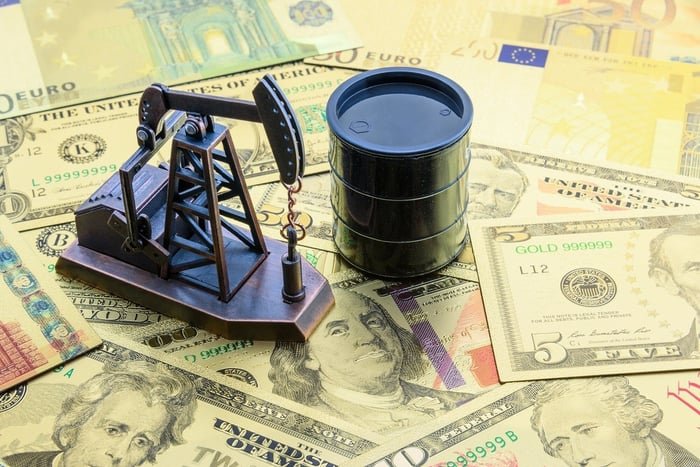Investors have priced PepsiCo’s short-term challenges into its stock, creating a solid long-term buying opportunity for patient investors.
Investors looking within the consumer staples sector for a quality dividend stock will often choose Coca-Cola (KO 0.55%). And understandably so. Not only are the brands of the beverage industry’s biggest name well-established, but its dividend track record speaks for itself. Not only has the company made its quarterly payments like clockwork for decades, it has raised its annual payouts for 63 consecutive years.
If I were going to invest $1,000 in a dividend stock today, however, it wouldn’t be Coca-Cola. I’d opt for rival PepsiCo (PEP -0.76%) despite its recent woes. In my view, the issues it faces are only short-term challenges that have created a fantastic long-term buying opportunity. They’ve also pumped up PepsiCo stock’s dividend yield to a level that’s just too good to pass up.
The same, but (very) different
At a passing glance, these two beverage companies look so similar that they might almost seem interchangeable. Coke is, of course, the world’s most popular soda brand, but Pepsi isn’t far behind. The Coca-Cola Company also owns Sprite, Minute Maid juices, Gold Peak tea, and several others, while Mountain Dew and Gatorade are part of the PepsiCo family.
For all their similarities, though, these two companies are more different than they are alike.
See, PepsiCo also owns snack chip subsidiary Frito-Lay, the name behind Lay’s potato chips, Fritos, Doritos, Cheetos, and more. It also owns Quaker Oats, giving it a presence in other aisles of your grocery store.
Yet that’s not the biggest difference between these two organizations. Perhaps more noteworthy is that while Coca-Cola predominantly relies on third-party bottlers to produce and distribute its drinks, PepsiCo owns and operates the majority of its production facilities. All told, it has nearly 20 properties spread across most of the world that supply its distribution chain.
This structural difference turns out to be a pretty big deal.
Forced to evolve and improve
Anyone who has kept tabs on PepsiCo in recent years almost certainly knows the stock has been sliding since the middle of 2023. What may not have been immediately obvious, however, is why.
There is a reason, though. While the inflation rate was, by that point, down to tolerable levels again thanks to the Fed’s aggressive moves, prices were not actually falling, and the lingering impacts of 2022’s high inflation grew from annoying to problematic. Higher costs of — well, everything — posed a challenge for PepsiCo that Coca-Cola didn’t face. It was Coca-Cola’s partner bottlers that bore the brunt of production cost increases, but PepsiCo is its own bottler. As a result, rising costs in what was already a relatively expensive aspect of the business further chipped away at companywide profit margins.
Management partially offset that impact by raising prices, for the record. But not all of it. Indeed, beginning in the middle of last year, PepsiCo’s revenues began regularly falling short of estimates while its first-quarter earnings came up short of lackluster expectations. Although its beverage sales at least held steady following price hikes, consumers were a bit hesitant to pay higher prices for snack chips, and largely balked at the price hikes on Quaker Oats products.
The end result was that PepsiCo’s profit margins are leveling off below their pre-pandemic levels rather than continuing to rebound. Investors have been pricing this headwind into the stock for a couple of years now.
PEP Revenue (TTM) data by YCharts.
The worst of this storm, however, may be in the rear-view mirror.
Pepsi’s current bull case is built on more than just the dividend
It’s not exactly thrilling. But, PepsiCo’s management is forecasting a low-single-digit percentage improvement on the top line in 2025. The analyst community agrees, and further expects this growth to accelerate over the following two years. Earnings growth is expected to be commensurate during this time frame.

Data source: StockAnalysis.com. Chart by author.
The thing is, such growth is likely for a handful of reasons.
One of these reasons is the fact that — while prices and costs are still rising — inflation is largely in check. As of May, the United States’ annualized inflation rate stood at a palatable 2.4%. At the same time, while the Bureau of Economic Analysis reports U.S. incomes took a small but unexpected tumble that same month, incomes were gradually growing in most of the recent prior months, keeping up with outlays well enough to allow savings rates to continue climbing. That’s at least a hint of economic health, underscored by Deloitte’s expectation for domestic GDP growth of 1.4% for all of 2025, despite the GDP shrinkage of 0.5% in Q1.
Meanwhile, the International Monetary Fund believes the rest of the world will actually report better GDP growth in 2025 than the United States will.
So what does this mean in practical terms? It’s a tailwind that makes it easier for consumers to justify shelling out a little more money on snacks and drinks — confidence that hasn’t exactly been rock-solid in recent quarters.
It’s also worth noting that PepsiCo is finally thinking about the things that truly drive or discourage purchases of its products. At a recent investor conference, for example, management talked about matters like package sizing, operating efficiency, and healthy snacking in an insightful way that had been missing from such discussions for a while.
As for the dividend, that was never in any real jeopardy to begin with. Investors were largely just pricing in the modest revenue headwinds and the equally modest profit headwinds. Even last year’s pressured profit of $6.95 per share was more than enough to cover its full-year dividend payout of $5.33 — a dividend, by the way, that management has raised for 53 years in a row with no end to the streak in sight. The upside of diving into the stock now is simply that after its overdone 31% pullback from its 2023 peak, its forward-looking dividend yield is up to more than 4.3% versus Coke’s current forward-looking yield of less than 3%.
Sure, these two companies are different, but they aren’t different enough to justify that degree of difference in their yields. The fact that PepsiCo may be ready to dish out a recovery that produces some meaningful capital appreciation simply sweetens the proverbial pot.








